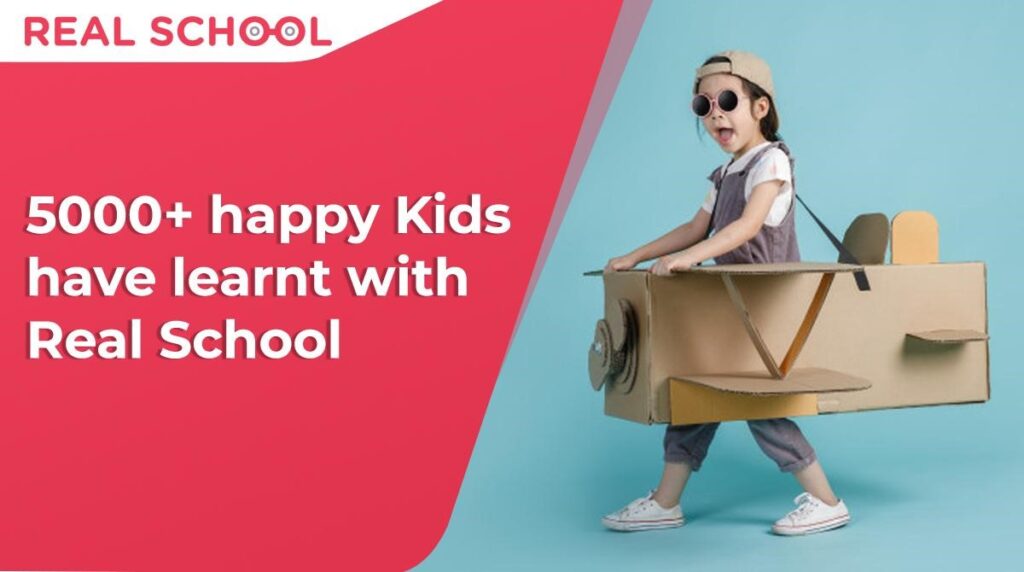
How Can You Use the Media to Foster Your Kid’s Interest in Technology?
We’re surrounded by a world that runs all around technology. One has to be a part of this hurricane if he or she wants to survive. But how can you use all the media for the betterment of your child? Let’s have a look!
Technology for Kids
Kids are growing up with the hope of getting access to our phones and auto-playing streaming videos. We place a strong emphasis on instilling in children the understanding that media use is about more than just entertainment. It may also include interacting with others: video chatting, for example, is appropriate for children of all ages, but infants may need parental assistance to understand it.
You must teach kids how to use digital technologies efficiently, creatively, and kindly if they are to grow up with a healthy understanding of what they are and how to use them effectively, creatively, and kindly. This entails both providing direct guidance and modeling our actions from the outset. There are edu-tech companies like Real School that have especially curated digital media content that helps kids learn new things without worrying about too much screen time.
But how exactly can you use media to get them interested in technology? Let’s see!
What is Media for Kids?
The plural medium, media, refers to the communication networks through which we disseminate information such as news, music, movies, education, promotional messages, and other details. Physical and online newspapers and magazines, television, radio, advertisements, telephone, the Internet, fax, and billboards are all included.
- It describes the varied ways through which we communicate in society. Because it refers to all or any means of communication, everything starting from a call to the evening news on television is often called media.
- When talking about reaching a sizable amount of individuals we are saying mass media. Local media refers to, for instance, your local newspaper, or local/regional TV/radio channels.
- Media are often weakened into two main categories: broadcast and print. The web has also emerged as a serious player, as a rapidly-growing number of individuals globally get their news, movies, etc. online.
- Print Media includes all kinds of publications, including newspapers, journals, magazines, books, and reports. it’s the oldest type, and despite suffering since the emergence of the web, remains employed by a serious proportion of the population.
- Broadcast media includes radio and television, which debuted at the beginning and middle of the twentieth century, respectively. Most people still get their news from TV and radio broadcasts – however, experts predict that it’ll not be long before online sources take over.
How is the Media Helpful to Kids?
Aside from serving as trendy toys, modern gadgets, learning and playing apps like Real School also are, for some, serving as a babysitting device – when kids are immersed in a web game, parents can proceed with other tasks.
Kids on social media networks are often a scary scenario for folks, however with proper guidance, the consequences of recent gadgets on child development also can be largely beneficial.
Here are several how social media platforms are often of benefit to kids.
Feeling Confident
Social media can help young children feel easier about communicating and being around others. Once they click “Like” or discuss a post, they gain confidence and subside shyness. A standard study showed that 29% of teens using social media felt that it helped them feel less shy, while 20% indicated that it can help them feel more confident.
When a toddler appears to be introverted and awkward around people, social media interactions can assist within the process of building that confidence and developing a far better understanding of the way to communicate.
Feeling Friendly
Social media also can help in boosting social interaction among kids – it is an easier environment where children can initiate new relationships without feeling awkward and anxious.
Social platforms can help kids make friends and enable them to create more familiarity with other children. Once they greet a lover or sort of a photo, they begin a virtual interaction, allowing them to practice their social skills with the relative distance and safety that social media offers.
Feeling Connected
The technology was made to attach people and strengthen relationships. Social media can help improve family relationships and be a shared interest among relations. Interacting via social networking sites can provide a kind of a security net, helping children to be more honest when they’re posting updates or tweets.
Through social media, parents can get a far better idea of what their children are feeling, thinking, and doing. For some, it can form a sort of the point of entry into their child’s life – viewing photos of friends and other contacts or browsing a timeline are often a flash of discovery for both the parent and therefore the child and may help open those lines of communication and understanding.
Feeling Smart
The Internet may be a web of data, and social media is not any exemption.
A report indicated that social media is making kids smarter. Apart from social skills, social media and online learning aids like Real School can help in the development of cognitive abilities such as problem-solving, understanding, logical thinking, and memory. For instance, they learn to critically discern which information is beneficial and which isn’t.
Feeling Informed
In addition to assisting students with their homework and assignments, the internet will also provide them with information that is useful in their everyday lives.
When you go online to social media, you’ll find news events, helpful tips, the newest in music, movies, and sports, etc. Social media can help kids understand what’s happening and what they have to understand.
Feeling Helpful
Researchers found that prosocial video games, or games that need interaction via social platforms, can encourage better behavior and tolerance for others. The study revealed that youngsters tend to be more helpful after playing prosocial games.
This is one more reason why parents should allow their kids to use social media: children can become more compassionate and empathetic, and even desire they need to guard their friends and share stuff with them. Prosocial video games also can reduce aggressive cognitions.
Feeling Relaxed
Children may use social media to share their disappointments, grievances, and worries, which can help them cope with stress.
It also can provide additional social support from a good range of individuals. At an equivalent time, social media also can be a way of distraction that will help children recover from stressful experiences.
Feeling Welcomed
A toddler will feel like he’s a part of something greater than himself when he joins a social network. A child’s sense of belonging to a network will aid in the development of self-confidence and self-esteem, as well as a sense of responsibility and attachment to his “family.” Kids will create mutual experiences with their peers and feel valued and loved when they are part of a social network.
Social media is here to remain and yes, it can help. Allowing your kids to use social media comes with an inventory of pros and cons, but when parents commit themselves to provide guidance and watching over the child’s online activities, social media can help during a child’s development.
The impact of technology and social media doesn’t depend upon technology itself, but on how parents educate and inform their children about them, and set realistic parameters around their use.
How can You Use the Media to Get Your Child Interested in Technology?
It’s important to help children learn safe digital usage and citizenship in a world where they’re “growing up digital.” Parents play a critical role in instilling these skills in their children. Here’s how you can do that:
Make Your Circle of Relatives Media Use Plan
Media should serve you and your family’s ideals, as well as your parenting style. Media, when used thoughtfully and properly, can improve one’s lifestyle. However, when used incorrectly or without consideration, the media may obviate the need for many essential things such as face-to-face contact, family time, outdoor play, exercise, unplugged downtime, and sleep.
Treat Media as You’d in Any Other Environment
In both actual and virtual worlds, the same parenting rules apply. Set limits; kids need and expect them. Know your children’s friends, both online and off. Know what platforms, software, and apps your children are using, what sites they’re visiting online, and what they’re doing online.
Screen-time Shouldn’t Always be Alone Time
When your children are using screens, co-view, co-play, and co-engage with them to encourage social interactions, bonding, and learning. Play a computer game with your children. It’s a fantastic way to show off your sportsmanship and gaming etiquette.
You’ll have the opportunity to introduce and share your own life experiences, perspectives, and guidance while watching a show with them. Don’t just monitor them online—interact with them, so you’ll understand what they’re doing and be a neighborhood of it.
Be an Honest Role Model
Teach and model kindness and courtesy online. Limit your media use because children are excellent mimics. You will be more available for and connected with your children if you’re interacting, hugging, and twiddling with them instead of simply watching a screen.
Know the worth of face-to-face communication.
Very young children learn best through two-way communication. It is necessary for language learning to engage in back-and-forth “chat time.” Conversations are often face-to-face or, if possible, via video chat with a traveling parent or far-away grandparent. The “back-and-forth dialogue” develops language skills even more than “passive” listening or one-way contact with a computer, according to research. Apps like Real School have several masterclass and programs that do this kind of passive learning.
Don’t Use Technology as an Emotional Pacifier
Media are often very effective to keep kids calm and quiet, but it shouldn’t be the sole way they learn to settle down. Children got to be taught the way to identify and handle strong emotions, come up with activities to manage boredom, or settle down through breathing, talking about ways to unravel the matter, and finding other strategies for channeling emotions.
It is Appropriate for Your Kid to Use the Internet
Online relationships are a part of typical adolescent development. Social media can support teens as they explore and find out more about themselves and their place within the grown-up world. Just make certain your teen is behaving appropriately in both the important and online worlds.
Many teens got to be reminded that a platform’s privacy settings don’t make things actually “private” which images, thoughts, and behaviors teens share online will instantly become a neighborhood of their digital footprint indefinitely. Keep lines of communication open and allow them to know you’re there if they need questions or concerns.
Conclusion
People may use social media to feel more connected and happier, as well as reconnect with old friends and make new ones. When life doesn’t live up to the standards set by perfectly edited accounts, however, the same social media can lead to depression or anxiety.
Furthermore, the content of news stories or social media posts may be beneficial and relevant to teenagers. They have access to people’s stories they would not have heard otherwise thanks to sites like YouTube and Instagram. Teens will be able to see that they are not alone in their challenges, which will give them strength and trust.
Media and interactive devices are becoming an inextricable part of our lives. The advantages of those devices, if used moderately and appropriately, are often great. Keep the face-to-face upfront, and do not let it stray behind a stream of media and tech.
The information presented above will provide you with the necessary information to assist you in increasing your children’s motivation.


5 Responses to How Can You Use the Media to Foster Your Kid’s Interest in Technology?